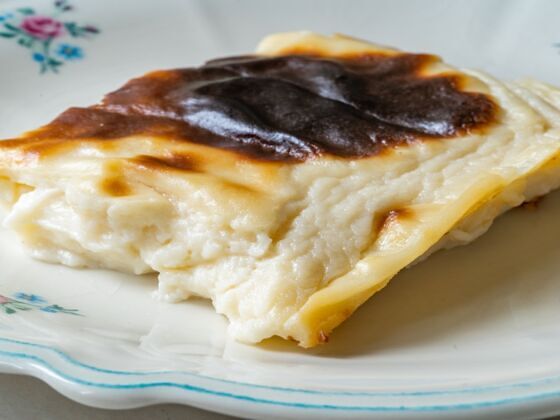If you’ve never heard of Süthelvasi, you’re probably not alone. While the food is becoming more popular around the world, it’s still relatively unknown outside its homeland. A classic Turkish dessert, süthelvasi (also known as sut helva or sütlü helva) is a rich, creamy pudding made with semolina flour, butter or margarine, sugar, and milk. It’s typically served warm or at room temperature and has a sweet, nutty flavor. The recipe was first documented in the Ottoman Empire during the 16th century but has been enjoyed by generations ever since. It can be eaten plain or topped with cinnamon, raisins, walnuts, hazelnuts, pistachios, almonds and other nuts.


What Is Süthelvasi, the Dessert That's Been Making Mouths Water in Türkiye for Centuries?
@foodwtf This is a Turkish dish called 'süthelvası' it has a similar taste and texture to custard 🤤. It's sold at the Bursa Gastronomy Festival that runs annually in #Bursa #Turkiye and showcases many local chefs 🎥 @Gurme Antepli•Burak #foodie #foodtiktok #oddlysatisfying #turksihfood #turkey ♬ Cooking – Oleg Kirilkov
Making süthelvasi is fairly straightforward but does require some patience — especially if you plan on making the pudding from scratch. To make it from scratch start by melting butter in a pan over medium heat then add the semolina flour and stir until golden-brown. Next add sugar then slowly pour in the milk while stirring constantly until all of the ingredients are combined into a thick paste-like texture. Once everything is combined, turn off the heat and let cool before serving with your desired toppings.
In Türkiye, süthelvasi is typically served as part of breakfast or dinner. It can also be enjoyed as an afternoon snack or after-dinner treat. It’s usually served warm but can also be enjoyed cold. Additionally, süthelvasi can be used as an ingredient in other dishes like baklava and kadayıf (a type of pastry).
Süthelvasi can be found just about anywhere in Türkiye—in restaurants serving traditional cuisine as well as in grocery stores where you can buy ready-made mixes for home preparation. Like most traditional foods, süthelvasi varies from region to region; some areas add more sugar than others while some may use different nuts such as pistachios or almonds instead of walnuts or hazelnuts.